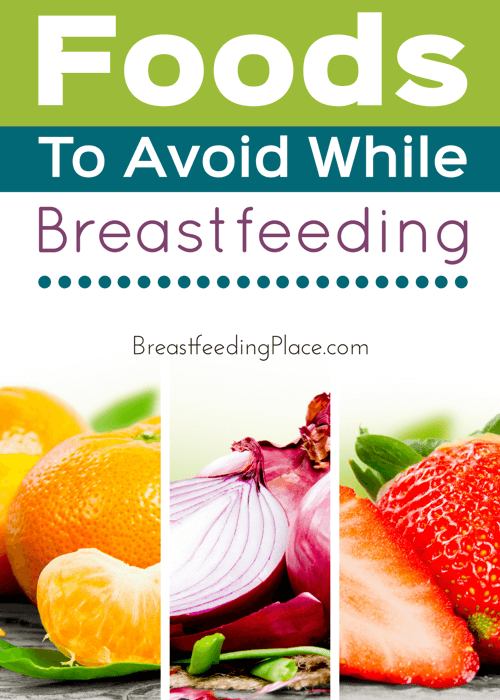If you do even an ounce of research you will soon notice that the list of foods to avoid while breastfeeding could go on for miles. A new mother might feel discouraged by noticing her favorite meals slowly diminishing for fear of upsetting her baby.
The truth is that every baby is different and under normal situations no single food can be scratched out across the board. In fact, most babies tolerate all foods rather easily and new research even shows most mom’s can safely have a drink or two while breastfeeding and caffeine is typically OK too.

It is common for babies to be fussy in the first few months so don’t be so quick to blame your diet. However, if you suspect your baby is unnecessarily unhappy, a simple change to your diet could solve all your problems.
Keeping a Food Journal
By paying attention to your baby’s behavior you can deduct what causes him or her discomfort. A food journal or diary is simply a log of things that you consume that you can refer back to in moments of distress. Write down the date and time, food you ate, and symptoms of your baby. You should be able to find a pattern for a specific food or food group after a week or so of logging. A simple notebook will do, however I have typed up a basic rough draft for you to download and print.
What are the symptoms of food intolerance?
If your baby has a sensitivity to a specific food, she might have certain symptoms after you eat. Below is a list of symptoms to look for while nursing.
- Fussy after a feeding for one to two hours
- Pulling knees up to chest or a “tight” tummy
- Explosive stools (more than 10 a day)
- Frothy or mucousy stools
- Runny nose or congestion
- Reluctance to nurse
Common Problems: Foods to Avoid While Breastfeeding
After a few days or instances of fussiness you may notice a pattern. Try to look for certain foods that correlate with your baby’s negative behavior. The most common triggers include:
- cabbage
- cauliflower
- chocolate (I know… total bummer)
- citrus fruits
- coffee
- corn
- cucumber
- dairy
- garlic
- hot peppers (and other spicy foods)
- onions
- parsley
- peanuts
- peppermint (and other herbs from the mint group)
- tomatoes
- strawberries
When my daughter was little she had a sensitivity to onions. It took so long to figure it out, but once I did we had very little issues dealing with my diet.
Now I’m dealing with a much greater issue the second time around…a dairy allergy.
How do I know if my baby has an allergy?
A baby who fusses all the time is said to have colic. A colicy baby may be showing signs of a food allergy. If your baby has a food allergy or intolerance he may have more sever symptoms like diarrhea, rash, gas, constant spitting up or reflux, and hard stools or bloody stools. Babies with food allergies may also have a runny nose or develop eczema.
The most common dietary allergy in a breastfeeding relationship is dairy. Animal byproducts cause lots of discomfort in breastfed babies. Although it sounds intimidating, cutting out dairy is easier than it sounds. If you suspect dairy to be the culprit of your child’s fussiness, eliminate dairy for a month to be sure. It can take up to a month to completely rid your system of a major allergen. (You’d be amazed at how great you feel after a month of being dairy-free, too.)
Other food allergens include soy, gluten, shellfish, and eggs. (Note: eggs are considered a protein and not part of the dairy food group.) If you cannot figure out what is causing your baby’s colic symptoms, an allergy test can be requested at 3 months of age.
What about thrush?
Thrush is a common headache among new nursing mothers. You can help avoid or rid yourself of thrush with some simple dietary changes. Foods that help yeast thrive include sweet foods such as fruits and pastries, yeasty foods like beer and bread, and dairy. Stay tuned for the next post in this series: How to Beat the Yeast Beast.
Photo credit: Images by Dorothee
Original article and pictures take www.breastfeedingplace.com site

Комментариев нет:
Отправить комментарий